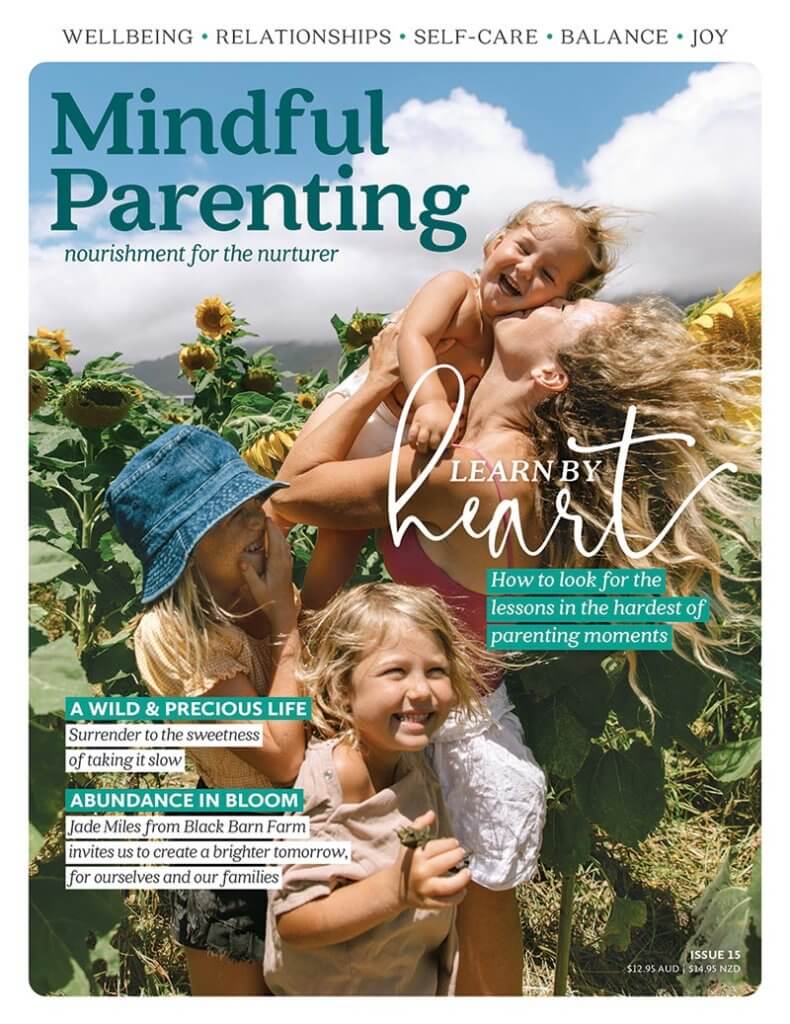
Mindfulness has established itself as a powerful practice to improve physical health, emotional wellbeing and relationships. Regular practise aids our ability to be more aware so we can live intentionally, with kindness for ourselves and others.
Touted for awareness-enhancing, anxiety-reducing properties, mindfulness practices are being incorporated into all areas of our lives including our work, rest and play. But what exactly is mindfulness?
FROM BUDDHIST ROOTS
The concept of mindfulness lies at the heart of Buddhist meditation and was first described in the Pāli Canon, a collection of literary, intellectual and spiritual scriptures, which make up the foundation of Theravāda Buddhism. According to Buddhist philosophy, mindfulness is a distinct quality of paying attention and Buddhists advocate four foundations for practising it: the posture of the body; our feelings and sensations; our state of mind or consciousness; and mental objects or phenomena. Buddhists also differentiate between ‘right’ mindfulness, also known as samma sati, and ‘wrong’ mindfulness, which is known as miccha sati. The difference, they say, is the intention behind the practice: a person practising right mindfulness has positive and good intentions, whereas a person practising wrong mindfulness is coming from a place of self-indulgence and superficial gain. When practised regularly, mindfulness meditation is believed to enhance our appreciation of life through sustained attention to our immediate experiences.
MINDFULNESS IN THE WESTERN WORLD
Mindfulness rose to Western consciousness in the late 1970s, when Jon Kabat-Zinn, creator of the research-backed program Mindfulness-Based Stress Reduction, taught mindfulness to chronically ill patients. Their pain decreased, they reduced their medications and their mental health and quality of life significantly improved. Since that time, researchers have aimed to demystify the ancient practice and thousands of studies have documented its many physical and mental benefits.
Research has shown that practising mindfulness strengthens our neural pathways in parts of the brain such as the prefrontal cortex, which results in an increased level of concentration, awareness and mental clarity. It also dials down activation in parts of the brain associated with depression and anxiety. Research shows that a regular mindfulness practice can even reduce physical pain, lower blood pressure and slow the ageing process at a genetic level.
THE DEFINITION
“There is no single universally agreed upon definition of mindfulness,” says Matthew Young, director of the Melbourne Meditation Centre. “Firstly, mindfulness is not a ‘thing’; it’s a way of paying attention more consciously than we normally do, so that we can see things with greater clarity and understanding, in order to respond in more skilful ways.” For Young, it’s a practice that’s centred around observing what’s going on internally. “Mindfulness involves paying attention to your thoughts and feelings in order to become more aware of them, less enmeshed in them and better able to manage them.” Clinical psychologist and mindfulness expert Dr Richard Chambers says mindfulness is simply being fully aware and engaged in each moment. “It involves paying attention to what we are doing with an attitude of openness and curiosity.”
THE SCIENCE
In addition to improving attention and memory, mindfulness also strengthens the hippocampus – the brain’s long-term memory area – which is responsible for our physical and emotional state. “As these brain areas become stronger, we become more able to focus,” says Dr Chambers. “Research shows this significantly improves our productivity. We also spend less time worrying and reliving past events, which reduces levels of stress, anxiety and depression.”
THE PRACTICE
Practising mindfulness is incredibly accessible in our day-to-day lives. “You can be mindful of anything, including your thoughts and emotions, the sounds and sights around you, physical sensations, your speech and behaviour,” says Young.
As you’re reading these words, become conscious of your breath, of the feeling of the paper and of the light and noise surrounding you. Once you’re in tune with the present moment, you’re practising mindfulness. “Practising mindfulness is one of the best things we can do to improve our wellbeing, in the short and long-term.”























